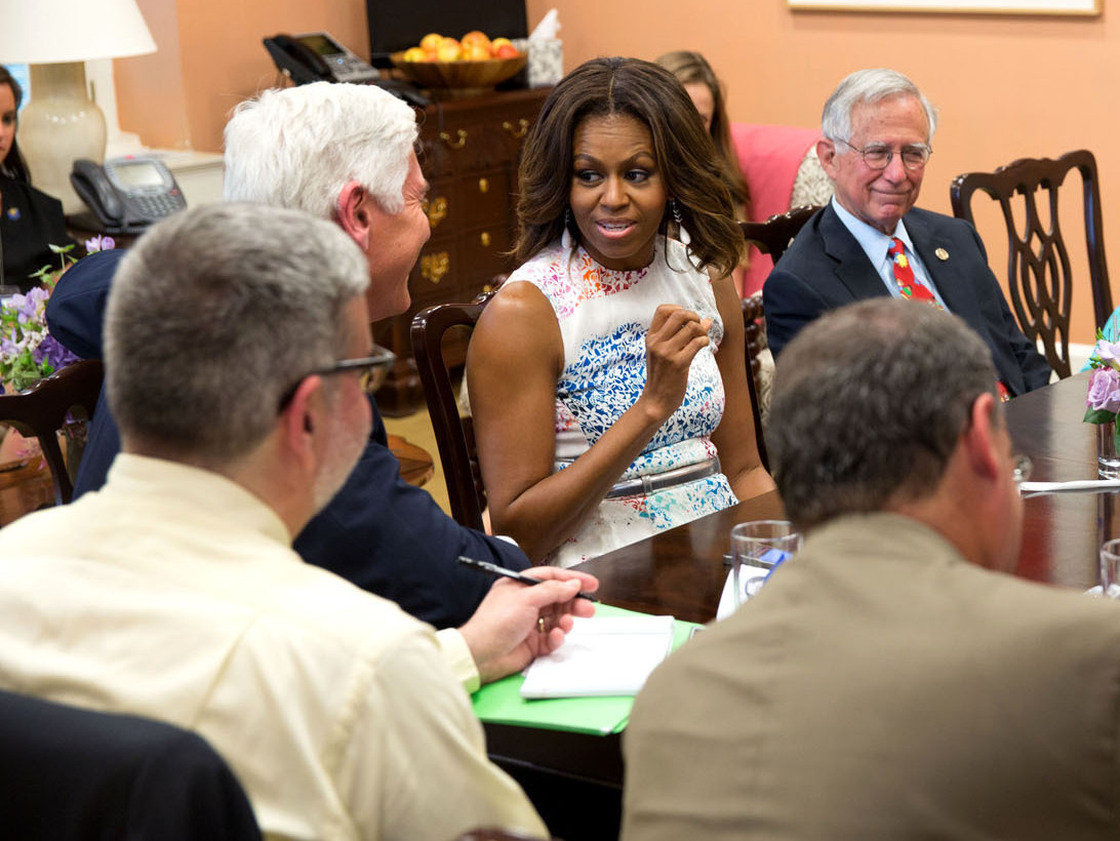Now leaders of the National School Board Association are weighing in with their concerns over what they say is "federal overreach on school meals." (The NSBA has previously stated its concerns about the cost of implementing the standards for a few months now.)
School board members from New York, Alabama and Pennsylvania told reporters they need "greater local flexibility rather than the trend towards top down federal requirements" to implement the Healthy, Hunger Free Kids Act.
But the First Lady says now is not the time to turn back the standards that have already been passed into law.
She points out that over 90 percent of schools report that they are successfully meeting — or are in the process of meeting — the updated nutrition standards.
And as for the complaints that some kids just won't eat their vegetables, it's not surprising that some kids resist, at least at first. "We just didn't expect the grown-ups to go along," Mrs. Obama said June 18 at a small roundtable discussion with reporters at the White House.
As we've reported, the U.S. Department of Agriculture, which oversees the school feeding programs, has offered technical assistance and grants to schools that are having trouble making changes in their cafeterias.
And, along the way, Agriculture Secretary Tom Vilsack has tried to dispel what he says are myths about the HHFKA. Here are a few:
- Myth 1: Kids are not eating more fruits and vegetables. Vilsack says that's not accurate. Specifically, "a recent Harvard study has concluded that, under the updated standards, kids are now eating 16 percent more vegetables and 23 percent more fruit at lunch" compared to before the HHFKA was implemented, according to the USDA fact sheet.
- Myth 2: Schools Are Losing Money. The SNA says about one million fewer kids are buying school lunch, which is leading to economic hardship. But Vilsack says, though some districts may be struggling, the system as a whole is seeing more revenue. In fact, a USDA analysis suggests that in the first year after implementation, schools saw a net nationwide increase in revenue from school lunches of approximately $200 million.
- Myth 3: The new nutrition standards are leading to more plate waste. As we've reported, some school food directors are reporting that students are tossing away foods they don't want to eat. But the USDA says there's no evidence that plate waste has increased. The agency points to a recent study by the Harvard School of Public health that showed the new school meal standards did not result in increased plate waste.
Copyright 2014 NPR.
